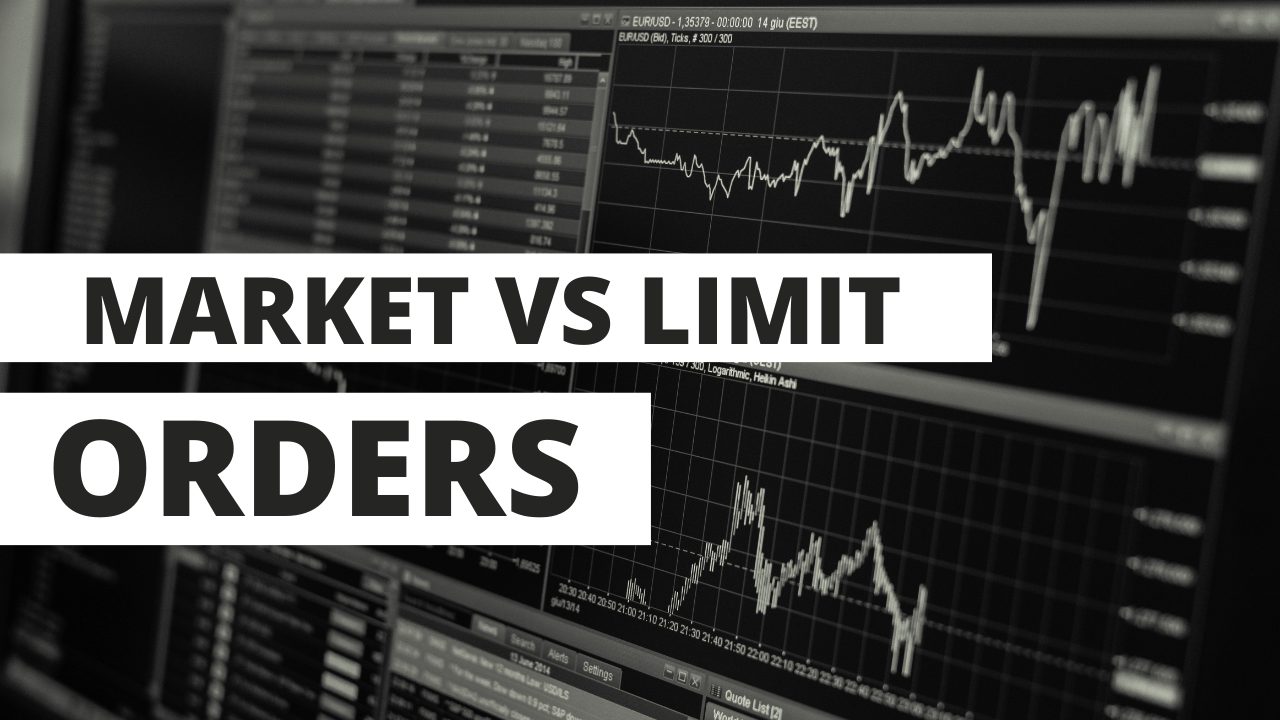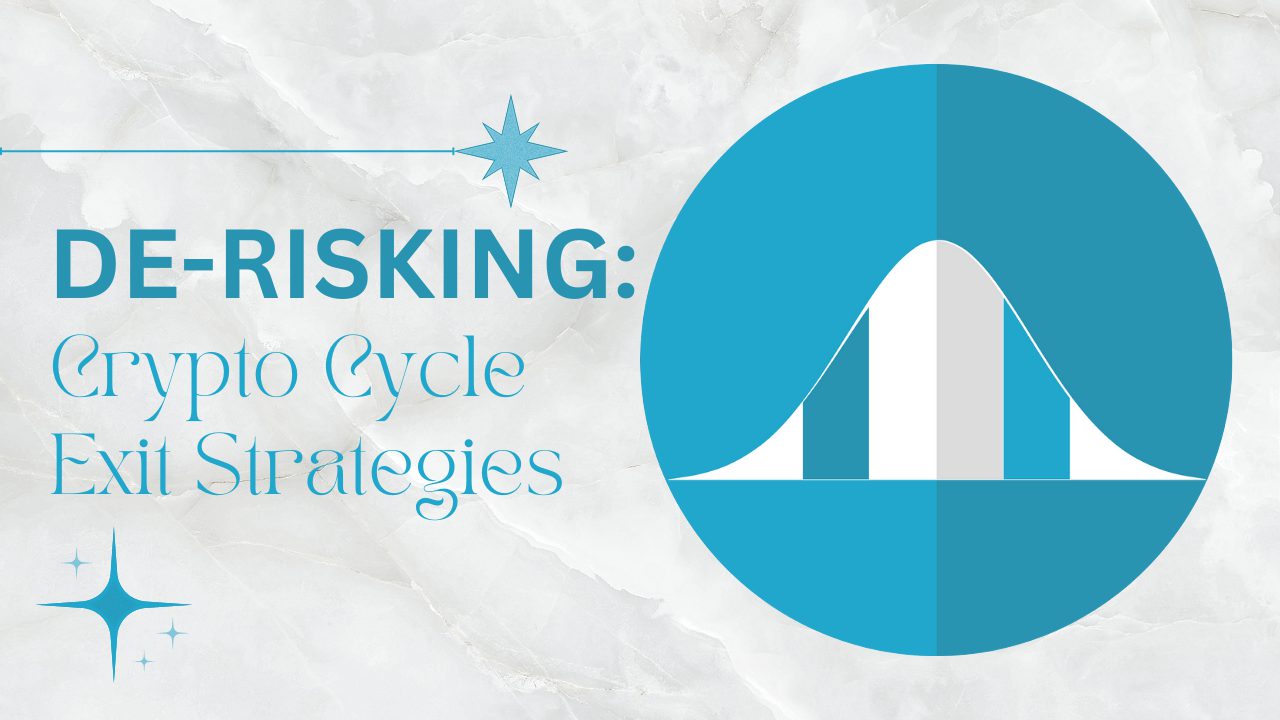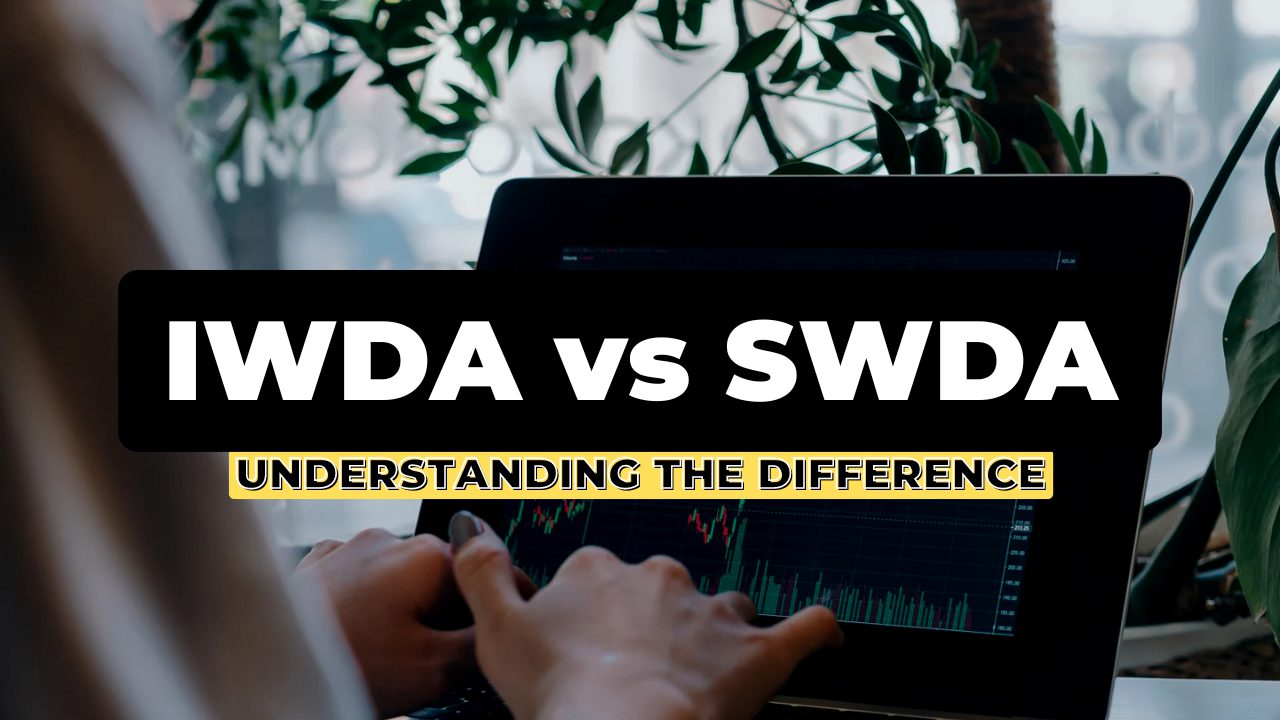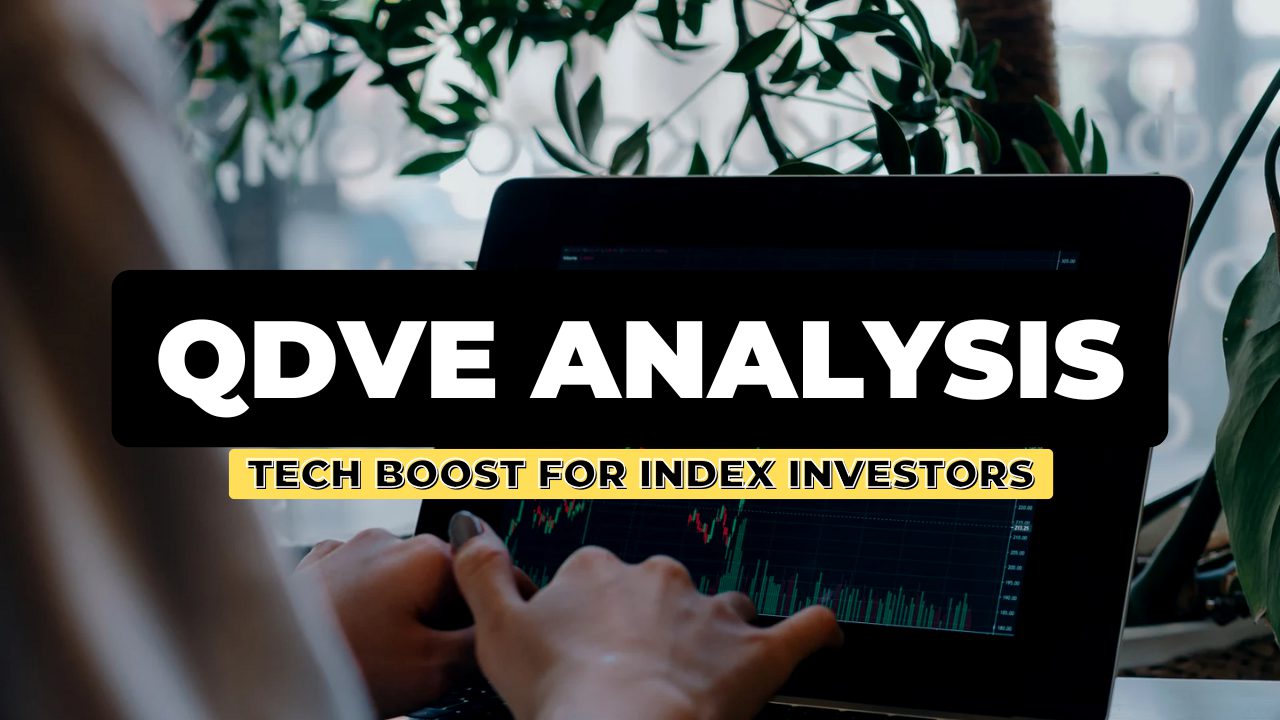
You probably saw “the stock market” being portrayed as a “safe long-term” investment.
But how is everyone so sure that the stock market will go up in the long run?
Let me tell you my perspective. First of all, I’ve been investing for around a decade and made massive gains in multiple asset classes. The only way to achieve this is to have a 100% conviction in the process. Because only then, you’d allow yourself to deploy a large portion of your savings (i.e. past productivity) and knowing, with full certainty, that you’ll be well off in the future.
If you fail to do this, you’ll only see stocks as some “risky bet” or something you “trade”. Not as “investments”.
If you’re hyped to achieve this shift, enjoy – this is your beginner’s introduction to: “Time in the market beats timing the market.”
The Stock Market: Historical Performance
Let me start by showing you a nice picture I found.
This is a chart of the S&P 500 since 1950.
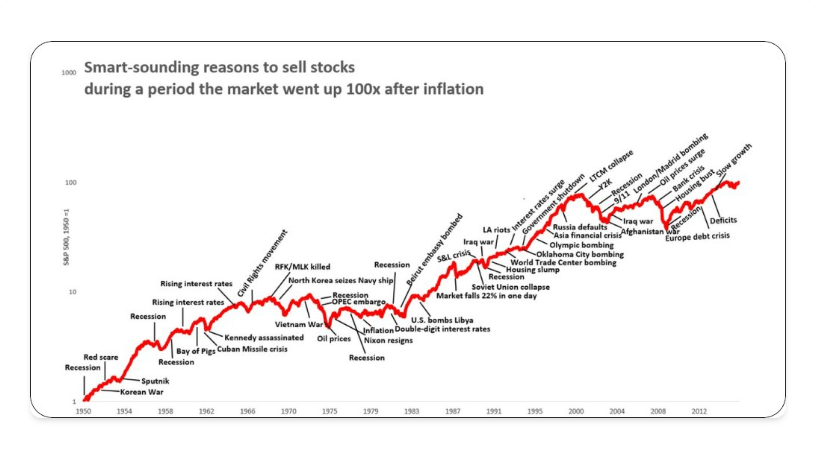
On the picture, you can see many labels pointing to periods where the world was collapsing… Allegedly.
But only by zooming out, you see that we turned out just fine.
Each time.
Actually, if you’d like a clearer representation of the 40 years of performance of the S&P 500, all you need to do is just google the term “sp500”:
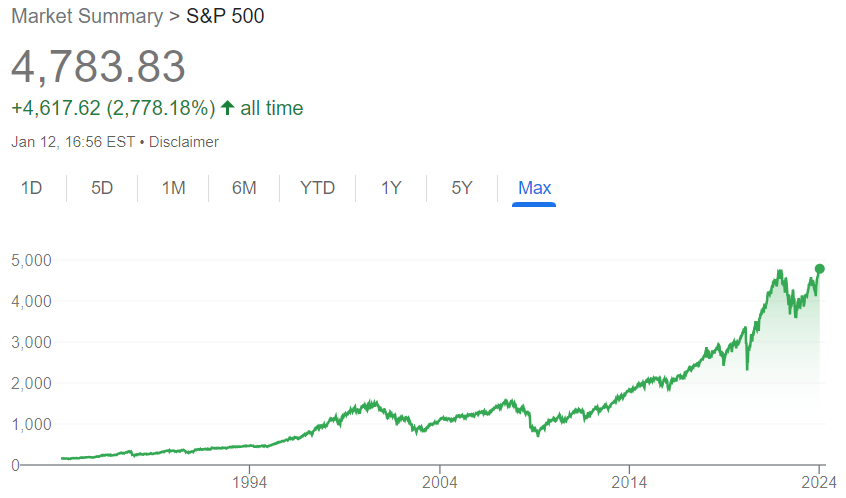
The last few recessions don’t seem too extreme from this perspective.
This leads us to the long-term performance of the market:
Investment Returns of the S&P 500
In my post, Cash vs Stocks in 30 Years, I give a clear picture of the returns on the long-term stock market returns.
In summary, the S&P 500 grows at an average rate of 10% per year. And that’s compounded over the decades.
However, not everyone has large savings to be deployed at once. Most people would invest a little bit each month, as they get paid. Below are some of the results you’d get if you invested the same amount into an S&P 500 fund every month, regardless of price.
First, this is the 10 year timeframe (2014-2024):
- $500 per month is $60,000 invested. Today’s value is $132,535.32
- $1,000 per month is $120,000 invested. Today’s value is $265,070.65
- $5,000 per month is $600,000 invested. Today’s value is $1,325,353.23
And here are the results on a 30 year timeframe (1994-2024):
- $500 per month is $180,000 invested. Today’s value is $1,001,710.39
- $1,000 per month is $360000 invested. Today’s value is $2,003,420.78
- $5,000 per month is $1,800,000 invested. Today’s value is $10,017,103.9
All calculations are done using the DCA Calculator at DQYDJ.
Your take-away: investing $500 every month can make you a millionaire given the right time horizon.
Imagine how powerful you are if you can afford to invest a multiple of that.
And since you’re reading this post, you most probably can.
Why Does the Stock Market Go Up?
Time to answer the million dollar question. Literally.
First and foremost, there’s the actual growth of the underlying companies. Each separately by providing value to society, and all collectively due to continuous increase in productivity and technological progress.
Remember, as long as we’re advancing in productivity, technology, and innovation, economic growth is a guarantee.
This will be reflected in the prices of all assets, including stocks.
But there’s another factor: the devaluation of currency.
As humans, we’re used to measuring things in the currency of our country. When we can buy “less house” with our money, we think in terms of “the house prices increased”. But more often than not, the reality is “the currency’s price decreased”.
We need to understand that inflation is part of life.
It’s not going anywhere and it’s here to stay.
Actually, in the economic framework we all live, it’s a crucial part of its longevity. Literally, our financial system can’t work without inflation.
That’s why the central banks of all countries do all they can to stabilize it at a “healthy rate”. A rate which, allegedly, stimulates economic activity, but doesn’t harm consumers and producers in the short-term. This arbitrary target in usually 2-3%.
So, in summary: why does the stock market go up?
Because it’s a ponzi scheme.
Because of economic growth and inflation.
The Last Concern
Okay, you trust everything you’ve read and you agree with the ideas.
And it’s all great in theory, but now, you need to make the actual decision of deploying capital into the stock market. Yes, that’s your hard-earned money.
Your human nature won’t allow you to ignore the practical concern: what if it still collapses?
The Collapse of the Stock Market?
The stock market is the backbone of the world we live in.
A total collapse of the stock market would mean a total collapse of capitalism and democracy.
If that happens, you can rest assured that losing a few United States Dollars would be the least of your concerns.
Understanding this concept is crucial in enabling you to develop the conviction you need.
And then, you’ll notice that the stock market isn’t “risky”… Investing in a specific company is risky.
The stock market is volatile.
It goes through market cycles – crashes, recessions, and depressions…
Everything you need to do is handle this volatility.
Because regardless of the swings during the days, the trend is up over the years.
TLDR: The only predictable way of beating inflation is by matching the long-term economic progress of the world.
… Unless you decide to opt-out using the decentralized alternative.
 Husband & Father
Husband & Father  Software Engineer
Software Engineer 





